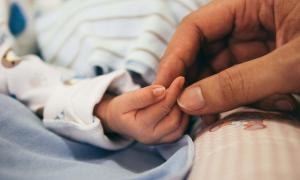Being born with HIV, a very different probability around the world

Antiretroviral therapy prevents the transmission of HIV to babies and this has allowed no cases of vertical transmission to be recorded in Spain during 2020
According to the latest HIV epidemiological data issued by the Spanish Ministry of Health, in 2020 there were no cases of vertical transmission, i.e. no children contracted the virus during pregnancy, birth or breastfeeding. These figures have been achieved thanks to antiretroviral therapy, which allows the virus to remain undetectable in the mother's blood and cannot be transmitted. However, motherhood for a person with HIV is very different depending on the geographical areas. For instance, in the Middle East and North Africa only 21% of pregnant women have access to treatment. The IrsiCaixa AIDS Research Institute -a centre jointly promoted by the "la Caixa" Foundation and the Department of Health of the Generalitat de Catalunya- is participating in studies, led by the University of Oxford, that characterise infection in babies. The results obtained so far show that starting treatment immediately after birth limits the persistence of the viral reservoir and that there are differences depending on the sex of the baby. These studies allow us to evaluate possible avenues of treatment for this potentially curable group. The data highlight the need for treatments and the results of research carried out in Western countries to reach everyone.
Children have a smaller viral reservoir, especially males
One of the fields studied by IrsiCaixa, in collaboration with the University of Oxford, is the reservoir of HIV -virus hidden in cells- in children from birth to adolescence. "In general, babies who are infected during pregnancy and receive antiviral treatment at birth have less of a reservoir than adults with HIV and easily reach undetectable levels," confirms Javier Martínez-Picado, principal investigator at IrsiCaixa and ICREA professor. "Thanks to the study of a cohort of more than 170 participants from South Africa, we have observed that there are differences between the reservoirs of boys and girls. In the case of boys, the reservoir is smaller and, moreover, it is easier to eliminate, as the viruses are more sensitive to interferon, a molecule of the immune system that acts as an alarm to deploy an entire immune response against HIV," he explains. These results, published in the journal Nature Communications, also show that a girl is 1.5 to 2 times more likely to become infected during pregnancy.
"These results can be explained by the fact that the baby's innate immune system is different depending on gender. In this study we saw that the T lymphocytes - immune system cells attacked by HIV - in the umbilical cord of girls are more activated and are therefore more susceptible to infection," says Julia García-Prado, principal investigator at IrsiCaixa and scientific director of the Germans Trias i Pujol Research Institute (IGTP). "We are also studying why the number of children who have a slow progression of HIV infection is much higher than in adults, in whom these profiles are exceptionally rare," she adds.
All of these studies aim to understand the mechanisms underlying HIV infection in infants with the ultimate goal of designing strategies that allow for treatment withdrawal. The availability of these therapeutic tools would be a major step forward for children, who are globally a group with lower adherence to therapy. Currently, in fact, only 52 per cent of children living with HIV are on treatment, compared to 76 per cent of adults. Among other strategies, the IrsiCaixa team is evaluating the possibility of administering immunotherapies together with antiretroviral treatment in order to reinforce control of the virus in this population.
Being a mother with HIV in Spain, and in the rest of the world
In Spain, thanks to antiretroviral therapy and clinical monitoring during pregnancy, people with HIV on treatment can have children naturally without the risk of transmitting the virus. "Years ago, if you had HIV, you couldn't consider the option of having children and, if you wanted to, it had to be by caesarean section and you had to take risks. Now this is no longer the case. In my case, throughout my pregnancy I was very clear that the risk of transmitting the virus to the baby was practically zero. Undetectable means untransmissible, a key concept that I have very much internalised but it is important to remind society. As for the baby, if the mother is undetectable throughout the pregnancy, the baby is not exposed to the virus at any time and, therefore, it is not that the baby is born undetectable or cured, but that it has never been infected, which is sometimes difficult to understand," Elena explains about her motherhood.
But the case of Elena and the rest of the women who have become mothers in Spain is not a reality throughout the world. "We see that, despite the progress that has been made globally to reduce vertical transmission, increase diagnoses and promote access to treatment, the figures are still very different when broken down by country or age," agree García-Prado and Martínez-Picado. "It is necessary that all the scientific findings that we make here, both for adults and children, are applied in all countries," they say. Globally, for example, 81% of pregnant women take treatment to stop vertical transmission, but in the Middle East or North Africa only 21% of pregnant women take treatment to stop vertical transmission.